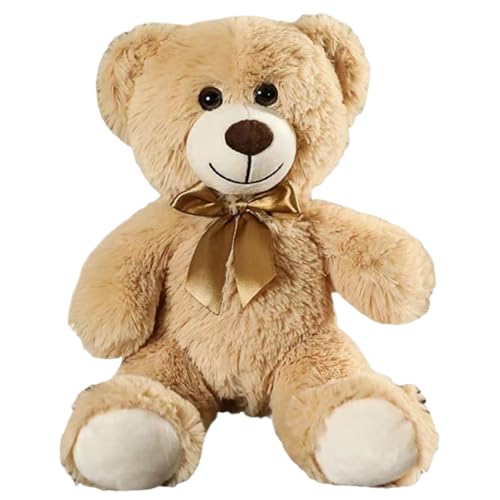The Different Types of Teddy Bear Stuffing
When it comes to creating a teddy bear, one of the most important factors to consider is the type of stuffing you use. The right stuffing can give your bear the perfect shape, softness, and cuddliness. There are several different types of stuffing materials available, each with its own unique characteristics. In this article, we will explore some of the most common types of teddy bear stuffing and discuss their pros and cons.
Polyester Fiberfill
Polyester fiberfill is one of the most popular types of teddy bear stuffing. It is lightweight, fluffy, and easy to work with. This type of stuffing is made from synthetic polyester fibers that are blown into a pillow-like form. Polyester fiberfill is hypoallergenic, which makes it a good choice for bears that will be given to young children or people with allergies. It is also machine washable, which is a convenient feature for maintaining your bear’s cleanliness.
However, one drawback of polyester fiberfill is that it tends to flatten over time. This can result in a less plush bear with less cuddliness. To combat this, some bear makers choose to overstuff their bears with polyester fiberfill to compensate for the flattening. Another disadvantage of polyester fiberfill is that it can be difficult to get an even distribution, which may result in lumpy or unevenly stuffed bears.
Poly-Pellets
Poly-pellets are small plastic pellets that are often used in combination with polyester fiberfill to give a bear a weighted bottom. These pellets are typically made from polypropylene and have a smooth texture. By adding poly-pellets to your bear’s bottom, you can make it easier to sit the bear up without it toppling over. The pellets can also enhance the bear’s overall feel, giving it a more lifelike weight.
One advantage of poly-pellets is their durability. Unlike traditional stuffed animals, bears filled with poly-pellets are less likely to lose their shape or flatten over time. However, poly-pellets can be a bit noisy, especially if they move around inside the bear. This may not be an issue for everyone, but it is something to consider if you prefer a quieter bear.
Wood Wool
Wood wool, also known as excelsior, is a traditional stuffing material that has been used for teddy bears for many years. It is made from shredded wood fibers, usually from softwood trees like pine or spruce. Wood wool has a unique texture that adds a rustic charm to your bear. It is also firm and dense, which gives your bear a solid and sturdy feel.
One advantage of wood wool is that it is very effective at holding its shape. Bears stuffed with wood wool are less likely to become lumpy or lose their form over time. This makes wood wool a great choice for bears that will be displayed or used as decorative pieces. However, wood wool can be more difficult to work with compared to other stuffing materials. It is also not suitable for bears that will be given to young children, as wood wool can cause splinters.
Memory Foam
Memory foam is a popular choice for teddy bear stuffing because of its unique properties. This type of foam is made from polyurethane and is known for its ability to mold to the contours of an object and then return to its original shape. This makes memory foam ideal for creating bears with a more realistic appearance and a soft, huggable feel.
One advantage of memory foam is that it is very durable and long-lasting. Bears stuffed with memory foam will retain their shape and texture for a long time, even with frequent handling. However, memory foam can be more expensive compared to other stuffing materials, which may make it less accessible for some bear makers. It can also be more challenging to work with, as it requires precision cutting to achieve the desired shape and size.
Cotton
Cotton is a natural and hypoallergenic stuffing material that is commonly used for teddy bears. It is soft, breathable, and has a pleasant texture. Cotton stuffing is often chosen for bears that will be given to infants or people with sensitive skin. It is also easy to shape and stuff, making it a convenient choice for beginners.
One drawback of cotton stuffing is that it may not hold its shape as well as other materials. Over time, cotton can flatten and lose its loftiness, resulting in a less cuddly bear. However, some bear makers choose to combine cotton with other stuffing materials, such as polyester fiberfill, to create a bear that is both soft and firm.
When it comes to choosing the right stuffing for your teddy bear, there are several options to consider. Polyester fiberfill is a lightweight and hypoallergenic choice, while poly-pellets can add weight and stability to your bear. Wood wool offers a rustic charm and solid feel, while memory foam provides a more realistic appearance. Cotton is a natural and soft stuffing option. Each type of stuffing has its own unique characteristics and advantages, so consider your preferences and the intended use of your bear before making a decision. Ultimately, the right stuffing will help create a bear that is not only visually appealing but also soft, huggable, and durable.






